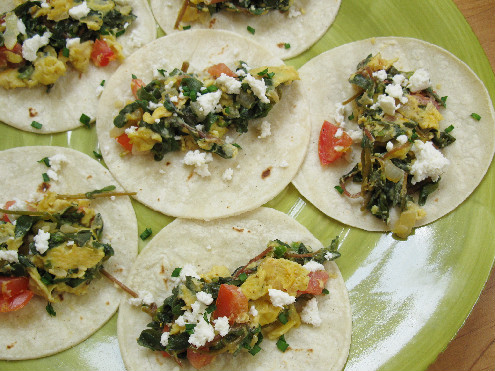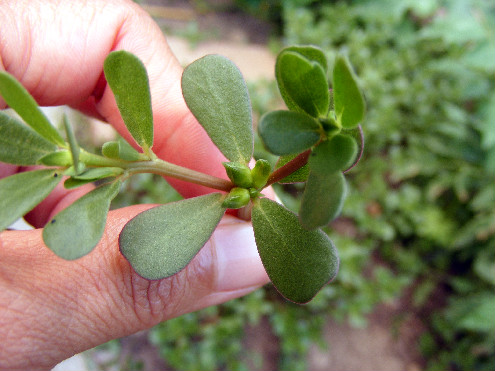Purslane: Egg Purslane Tacos – Tacos de Verdolagas y Huevos
Sunday, July 25th, 2010I’m excited you’re excited for purslane. I feel like I’m on a marketing campaign for the succulent this summer.
I confess, however, the inspiration for featuring this ingredient came from my hubby. He’s been making green smoothies this summer (adding raw kale, spinach, collards and other greens into his berry smoothies for extra nutrients). One day he asked about “purslane” and I reminded him that he’s eaten it in tacos de verdolagas.
In most Mexican cookbooks, verdolagas/purslane are mentioned in recipes with pork. But, they are also frequently eaten scrambled with eggs. That’s how I remember eating them growing up. When I told my brothers and sisters that I was writing about verdolagas – they waxed nostalgically for those tacos with verdolagas, sautéed onions, chile and scrambled eggs.
For those new to purslane, the cooked version tastes like spinach and loses its tanginess. It’s a nice earthy compliment to eggs.
When you prepare the raw purslane, make sure to use the florets and use only the tender part of the stem. The whole stem is edible, but I find the really thick stems chewy. Substitute purslane in those recipes where you’d usually have sautéed greens like spinach.
This morning we had tacos de verdolagas with a little queso fresco and salsa. They are great for breakfast, lunch, dinner or even a snack.
If any of you are already purslane fans, what’s your favorite way to eat it?
Tidbits on Purslane:
- Purslane is loaded with vitamins and minerals but for anyone watching their nitrate intake – as in spinach, don’t over do it.
- Its name in Malawi (a southeast African country) translates as “buttocks of the chief’s wife,” referring to the plants rounded leaves and juicy stems.







